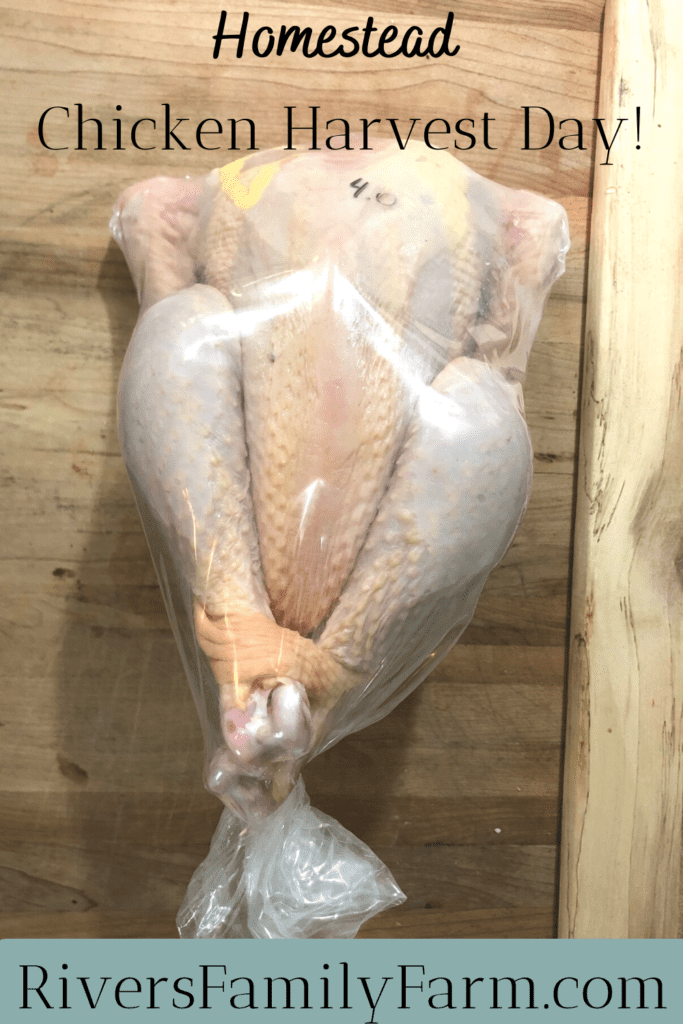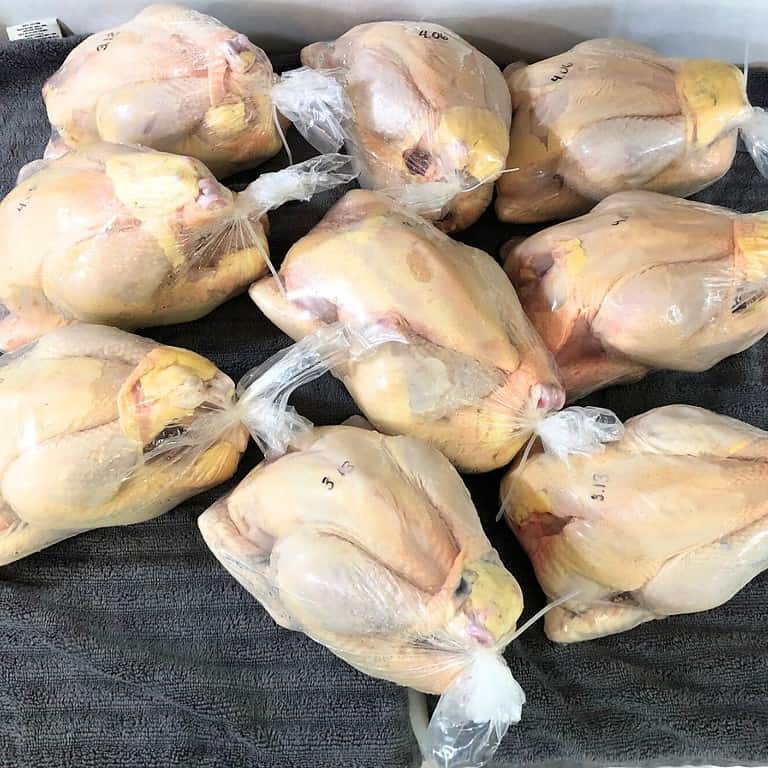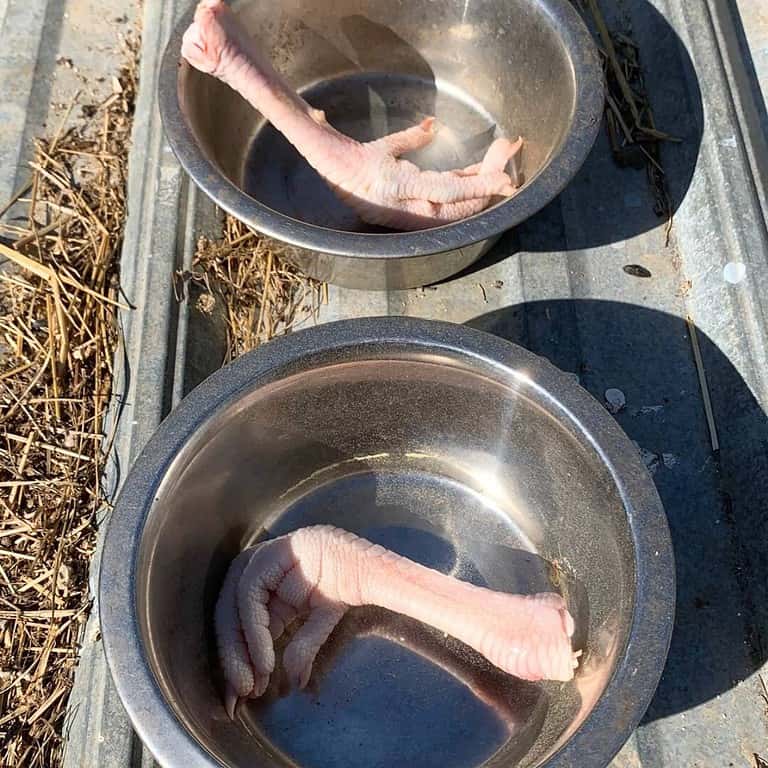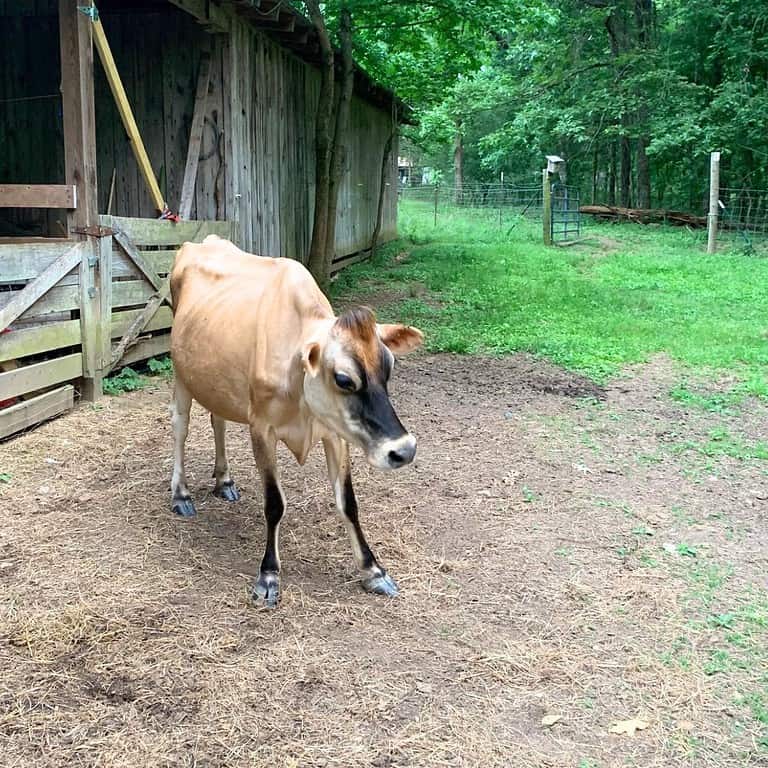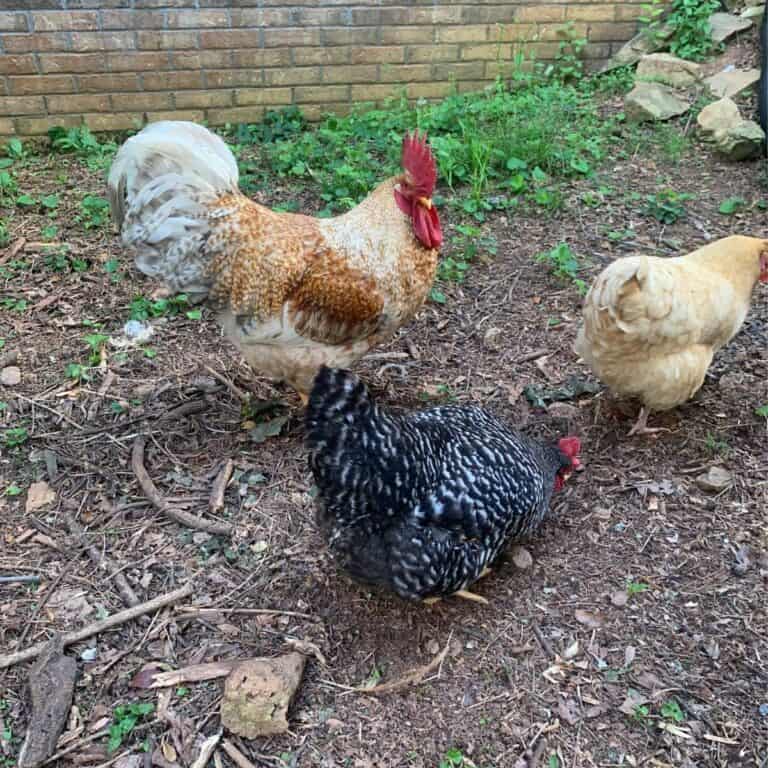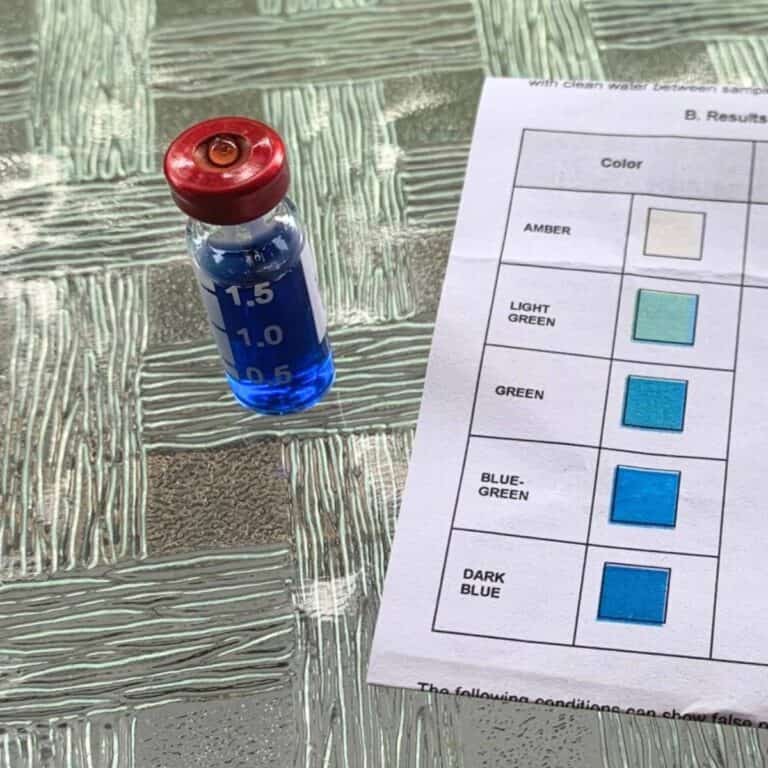It’s a Homestead Chicken Harvest Day! (Part 1)
(This is not a tutorial!) Living on a farm has many joys and opportunities including the piece-of-mind that comes with growing your own protein. Raising meat chickens is one of our sources of protein but that also comes with a long chicken harvest day. This post is all about why we grow our own poultry and what we grow.
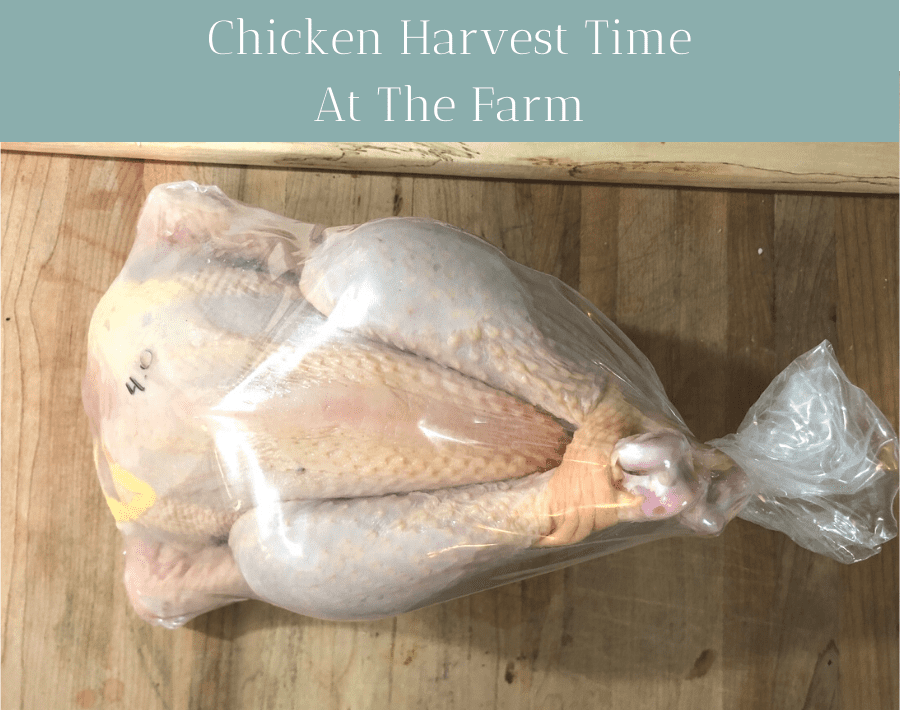
This post may contain affiliate links, which means I make a small commission at no cost to you. Click here for my full disclosure.
Why we choose to grow our own meat chickens versus buying factory-farmed chicken from the store?
We wanted to grow our own food in a more respectful and natural way than factory-farmed food…especially factory-farmed meats.
When we moved to the farm, the first animals we bought were baby chicks. We finally had the freedom to start living our dream and that included raising animals ethically for consumption.
If you’re curious to see how factory-farmed chickens live, watch this short documentary.
If the first reason isn’t enough, the other two reasons we choose to grow our own meat chickens is because of improved nutrition and flavor.
There is simply no comparison between factory-farmed chickens and home grown, pastured poultry. The texture is very different; pastured poultry meat is dense and packed with nutrition and flavor because of how the chickens are grown.
What breed of meat chicken did we grow?
We decided to grow Freedom Ranger meat chickens this year.
Last year we grew Cornish Cross meat chickens but I wasn’t too happy about the leg problems that a lot of them had when it was almost time to harvest them. The legs on several gave out because of their rapid growth and the chickens couldn’t walk, which meant we had to seclude and take care of them individually. I felt bad for them.
I’m happy to report that the Freedom Rangers did better than the Cornish Cross for us. They also got a little bit bigger than the Cornish Cross!
Since the Freedom Rangers are known for being good foragers, we decided to free them from their mobile chicken tractor for their last four weeks so they could forage and enjoy life. We did have a couple of losses due to predators and our dogs but for the most part they all thrived when they were released.
If you want to try growing your own meat birds, I highly recommend Freedom Rangers.
To vaccinate or not to vaccinate?
We don’t personally like to vaccinate our chickens against Marek’s disease or anything else and we haven’t had any issues. We also don’t use medicated chicken starter.
Other than the Cornish Cross’ leg issues, none of our chickens have been sickly. I think this is partly because of the breed but also because of all the green grass, bugs, and sunshine (nature’s sanitizer) they get.
How long did we grow the Freedom Rangers?
We harvested most of our Freedom Rangers before they were 13 weeks old.
We ordered 55 baby chicks online but we saved some for future breeding…an experiment for 2023. We are going to experiment with breeding our flock of meat birds to hopefully close the loop on our meat bird production and be more self-sufficient.
How much meat did we get?
Our average Freedom Ranger weighed about 4 pounds after evisceration and the total weight from all the chickens we harvested was 170 pounds.
And don’t forget to save the chicken heads, necks, and feet for future batches of rich, gelatinous chicken bone broth!
I also like to save the chicken livers. Organ meats, especially liver from home-grown, pasture-raised animals, are a superfood! Here’s my recipe for chicken liver souffle with raisins that’s so good I could eat it for breakfast, lunch, or dinner! Also, try my delicious sausage and liver rice recipe!!
Click here to read more about the health benefits of eating liver.
How long is our chicken harvest day?
Our chicken harvest day lasts for 8 hours.
We divide our chicken harvest into two parts. We harvest and eviscerate in the morning and then we leave our chickens in an ice chest filled with ice and water while we take a break for lunch.
After lunch, we prep the chickens and shrink-wrap them for the freezer.
The morning routine for 43 birds took us almost five hours and the afternoon routine took another three hours. That was with four of us working in the morning.
I like to do the afternoon routine by myself because I’m particular about how I want the poultry to be prepped for future cooking. Plus, I like to weigh each one after shrink-wrapping and write the weight in Sharpie on the bags.
Return on investment…more than just dollars.
In my humble opinion, there’s no substitute for home grown, pasture-raised poultry where my family participates in every part of the life cycle. I think it encourages a healthy respect for life and helps develop a healthy relationship with food.
People who participate in the life cycle this way are less wasteful of food in general because they know the work, effort, and sacrifice that went into growing and harvesting that food.
If you haven’t made the leap yet to harvesting home raised poultry, I want to encourage you to explore trying it this year. It only takes 13 weeks (or less)! There’s no better time to learn this valuable skill than right now during these inflationary and uncertain times.
Leave a comment!
I’m curious if any of you also raise your own meat animals. Leave me a comment and let me know!
Other Posts You May Enjoy
7 Tips for Emotions to Raise and Harvest Meat
The Secret to Raising Livestock for Cheap!
When is the Best Time to Order Baby Chicks?
Homestead Chicken Harvest Day! (Part 2)
Preparedness Tips to Save Money on Food
Pin It For Later!
